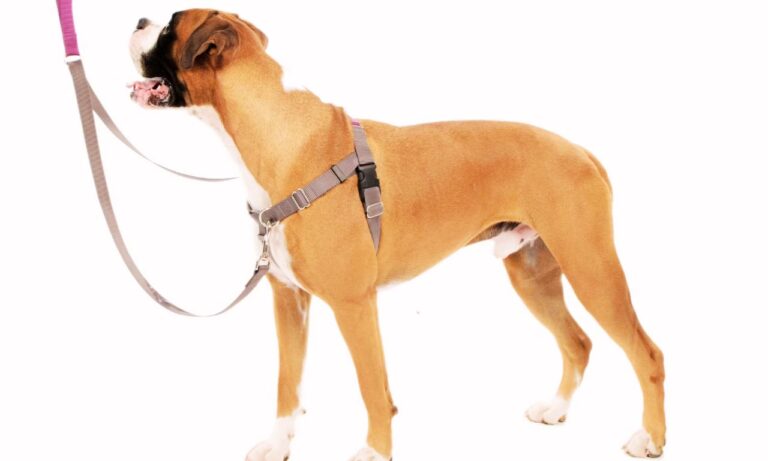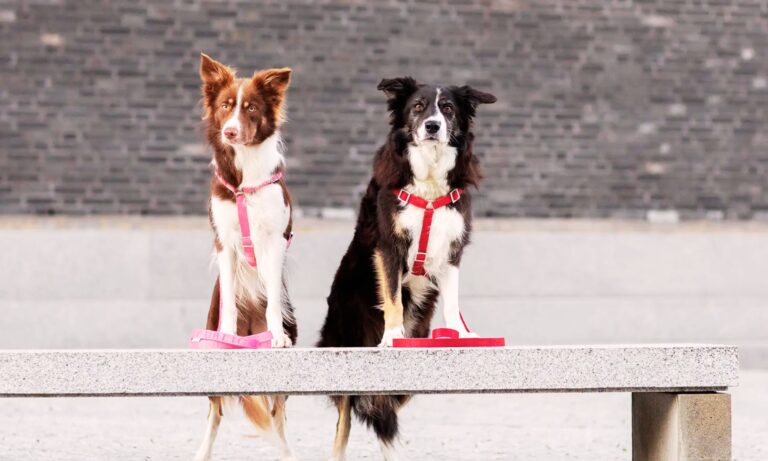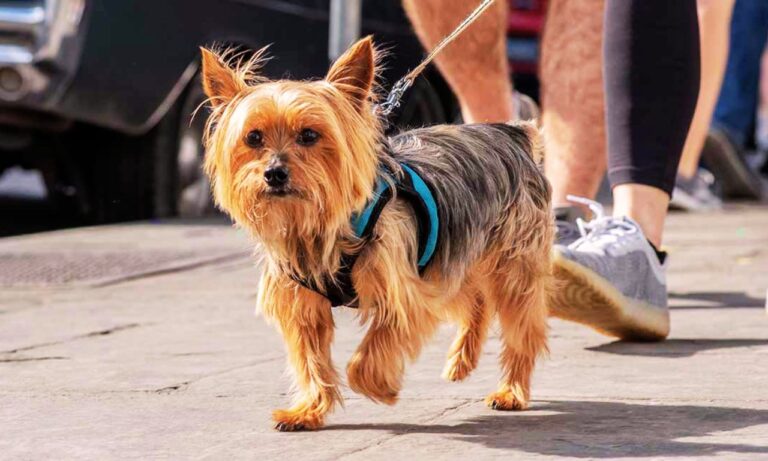When comparing the Labrador vs Golden Retriever Size, you’re looking at two of the most beloved family dogs in the world — but there are some notable differences in their size, build, and energy levels.
While both breeds are medium-to-large-sized, Labradors tend to be slightly more muscular and compact, whereas Goldens have a longer, leaner, and slightly taller appearance thanks to their flowing coats.
A male Labrador typically stands 22.5–24.5 inches tall and weighs 65–80 pounds, while a male Golden Retriever stands 23–24 inches tall and weighs between 65–75 pounds.
At first glance, they seem very similar — but subtle differences in bone density, coat type, and muscle tone give each breed a distinct physical presence.
Choosing between a Labrador vs Golden Retriever Size isn’t just about looks — their size influences their lifestyle needs, health risks, and even their exercise and grooming requirements.
This detailed guide will break down their growth charts, body composition, movement, training needs, and which breed might fit your home and lifestyle best. For detailed guidance on selecting the correct collar size for a Belgian Shepherd, this article provides essential tips to ensure your dog’s comfort and safety.
Blog Highlights
ToggleGrowth Rate: How Fast Do Labs and Goldens Grow?
Both breeds experience rapid early growth, reaching near adult height within their first year. However, just like Labs, Golden Retrievers continue “filling out” into their second year, gaining muscle mass and body condition.

Labradors typically hit their maximum physical strength earlier, while Goldens mature slightly slower in body mass, remaining lanky into their adolescence. Discover the perfect collar size for an Anatolian Shepherd Dog to ensure comfort and security for your furry friend.
Average Growth Chart (Male Comparison):
| Age | Labrador Retriever (Weight) | Golden Retriever (Weight) | Labrador (Height) | Golden (Height) |
| 2 Months | 15–20 lbs | 10–15 lbs | 9–11 in | 9–11 in |
| 4 Months | 30–40 lbs | 25–35 lbs | 14–16 in | 14–16 in |
| 6 Months | 45–55 lbs | 40–50 lbs | 18–20 in | 18–20 in |
| 9 Months | 55–65 lbs | 50–60 lbs | 20–22 in | 20–22 in |
| 1 Year | 60–75 lbs | 60–70 lbs | 22–24 in | 22–24 in |
| Full Grown | 65–80 lbs | 65–75 lbs | 22.5–24.5 in | 23–24 in |
Note: Females are generally 10–15% smaller and lighter across both breeds.
Labrador Retriever: Compact Athlete with Bursting Energy
The Labrador Retriever, developed in Newfoundland and refined in Britain, is a working breed through and through. Their body structure is built for endurance, strength, and athleticism, making them ideal retrievers for hunting and sport.

Size Specs
- Adult Male Weight: 65–80 lbs
- Adult Male Height: 22.5–24.5 inches
- Adult Female Weight: 55–70 lbs
- Adult Female Height: 21.5–23.5 inches
Body Composition
- Labradors are compact, powerful, and thickset without appearing bulky.
- They boast a broad skull, strong jaw, and deep chest, supported by solid, straight legs and strong pasterns.
- Their defining feature is their short, dense, water-resistant coat and a thick, tapering “otter tail” that aids in swimming.
- Labradors typically have a heavier muscle-to-fat ratio compared to Goldens, resulting in a more “solid” feel when you handle them.
Learn more about the unique double-layered coat of an Anatolian Shepherd and how to care for it effectively.
Golden Retriever: Elegant Athlete with Flowing Lines
Golden Retrievers were developed in Scotland as retrieving dogs specifically suited for rugged terrains and cold climates.
Their elegant build is designed for stamina, agility, and friendly interaction.

Size Specs
- Adult Male Weight: 65–75 lbs
- Adult Male Height: 23–24 inches
- Adult Female Weight: 55–65 lbs
- Adult Female Height: 21.5–22.5 inches
Body Composition
- Goldens have a longer, lighter structure compared to Labradors.
- Their skeletal frame is slightly finer-boned, supporting a graceful, smooth movement.
- The long, feathered coat gives them a slightly larger appearance, but under the fur, Golden Retrievers are lean, muscular, and highly athletic.
Their signature flowing tail, long feathery ears, and expressive eyes add to their gentle, soft look — but don’t let it fool you: Goldens have working stamina and retrieving skills just as impressive as their Labrador cousins. For insights on whether Pomeranians should wear a collar, including considerations for safety and alternatives, check out this informative article.
Labrador vs Golden Retriever Structural Comparison: Frame, Girth, and Gait
| Trait | Labrador Retriever | Golden Retriever |
| Frame Type | Compact, muscular, robust | Long, lean, graceful |
| Gait | Efficient, ground-covering stride | Smooth, floating, rhythmic gait |
| Chest Width | Broad, deep | Moderately broad |
| Head Shape | Broad, slightly wedge-shaped | Broad, slightly narrower muzzle |
| Tail | Thick “otter tail” | Long, feathered “flag” tail |
| Neck | Strong, moderately arched | Long, graceful, slightly arched |
Gait and Movement
- Labrador: Moves with a practical, ground-eating trot. Labs are built for efficiency, whether running, swimming, or sprinting after a ball. Their movement is powerful but not flashy.
- Golden Retriever: Moves with a unique, elegant “floating” gait that looks almost effortless. Goldens are known for their smooth, rhythmic motion, ideal for long sessions of hunting or play.
Impact of Size on Training and Performance
Both breeds are known for their intelligence and trainability, but their slight differences in size and energy manifest in how they learn and work.
Labrador Training Insights:
- Highly food-driven, making them eager participants in training.
- Can become overly excited, needing early impulse control exercises.
- Requires strong foundations in leash manners due to pulling strength.
- Loves active jobs: scent work, retrieving, search and rescue.
Golden Retriever Training Insights:
- Slightly more sensitive than Labradors; responds exceptionally well to positive reinforcement.
- Learns best with consistency and gentle correction.
- Thrives on variety and mental challenges — games, tricks, agility.
- May need patience during the “gangly teenager” phase where coordination and focus fluctuate.

Learn about the size collar for an American Eskimo to ensure a perfect fit and comfort for your dog.
How Size Affects Health and Longevity
Even moderate differences in body structure can impact health trends and longevity.
Labrador Retriever Health Risks:
- Hip and elbow dysplasia (common in heavier builds)
- Obesity (Labs are prone to overeating)
- Exercise-Induced Collapse (EIC) in some bloodlines
- Ear infections (due to water activity and ear structure)

Average Lifespan: 10–12 years
Golden Retriever Health Risks:
- Hip dysplasia (due to long, lean frame)
- Cancer (notably lymphoma and hemangiosarcoma — higher than average)
- Hypothyroidism
- Skin conditions and allergies (due to dense coat)
Average Lifespan: 10–12 years (though some Goldens are prone to slightly earlier mortality due to cancer risks)
Note: Both breeds benefit greatly from a balanced diet, healthy exercise habits, and routine vet checkups to maximize their lifespans.
For a comprehensive guide on what kind of harness is best for a Pomeranian, including comfort and safety tips, check out this article.
Size and Lifestyle Fit: Which Breed Works for You?
Labrador in the Home:
- Needs an outlet for energy: daily walks, runs, swims, or play sessions.
- Fits into active households; ideal for runners, swimmers, hikers.
- Can adapt to apartment living only if exercise needs are vigorously met.
- Shedding is moderate but year-round.
Golden Retriever in the Home:
- Slightly calmer indoors once matured but still needs daily exercise.
- Thrives in structured households with routines and companionship.
- Best suited for families, therapy work, or owners who enjoy outdoor recreation.
- Heavy seasonal shedding (“coat blow” periods) — regular grooming needed.
Labrador vs Golden Retriever Size — Which Breed Wins for You?
Both the Labrador vs Golden Retriever Size bring unbeatable loyalty, intelligence, and companionship to any home. Discover if the American Eskimo is a guard dog and learn about its suitability for protecting your home.
However, their subtle differences in size, coat, and energy level might influence which one better fits your lifestyle.
- The Labrador Retriever offers robust energy, compact strength, and a no-nonsense, eager-to-please work ethic.
- The Golden Retriever delivers graceful athleticism, unmatched gentleness, and a heart-melting friendliness that few can resist.
If you want a more rugged, slightly sturdier dog who can keep up with endless activities, the Labrador Retriever may be your best bet.
If you’re seeking a softer, slightly larger-appearing dog with natural calmness and social charm, the Golden Retriever could be your perfect match.
| Trait | Labrador Retriever | Golden Retriever |
| Weight Range | 65–80 lbs (male) | 65–75 lbs (male) |
| Height Range | 22.5–24.5 inches | 23–24 inches |
| Growth Period | Up to 24 months | Up to 24 months |
| Body Type | Compact, heavy-built | Lean, long-limbed |
| Speed & Agility | High | Moderate-High |
| Strength & Mass | High | Moderate |
| Lifespan | 10–12 years | 10–12 years |
Need More Help Choosing or Preparing for Your Dog?
Whether you’re planning for a bouncy Labrador puppy or a graceful Golden Retriever addition, we can help with training guides, diet tips, and best gear picks tailored to each breed!





